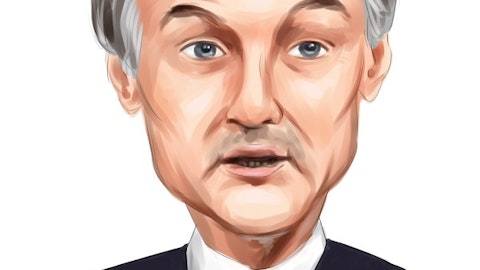Laura Niklason: Well, I’ll let Dale handle the sales force and part of the launch, but I will say that an ongoing focus for Humacyte and one where we’ve made tremendous progress is really speaking to the health economics and the budget impact modeling of the vessel in the care of trauma patients. It’s been incredibly useful that our clinical trial results have shown a real decrease in amputation and in infection as compared to patients who were historically treated with synthetic grafts. That really provides us excellent hard data to make strong economic arguments around the utility of the HAV not just for improving patient outcomes, but also for improving the total expenditures for hospitals and for insurers. So, we’re working closely now with our colleagues and health economics that we’ve brought on a whole team here at Humacyte, really mapping out those arguments, and also putting together dossiers that we’re going to bring forward to insurers even in advance of approval to outline for them the size of the clinical problem and the benefits that we think the HAV can bring to patients into the healthcare system.
So that’s really in terms of we’re doing work with healthy economics, reimbursement and also in coding, and that’s all very active work streams. But I’ll let Dale speak to the sales force and the timing on that.
Dale Sander: Yes. Thanks, Laura. And Samantha, as Laura said, much of the effort of the core commercial team right now is geared towards those longer lead time items, as she mentioned, the budget impact model and coding and reimbursement and market access. In terms of the sales force itself, certainly, there is planning going on in terms of sizing that for us and how we would divide up territories and strategies like that. But the actual sales force itself will be brought on — will be recruited, but brought on closer to market launch. So there’s certainly not a need to bring them on so far in advance of the 2024 launch. But certainly, the planning is underway right now. As a reminder, this is a very concentrated market. We’ve talked about before where 80%-plus of the patients tend to be treated at level one trauma centers, and there’s approximately 200 of those centers.
So, this will be a highly qualified sales force geared towards surgical type products within the trauma setting, but it will not be a huge sales force.
Unidentified Analyst: Great. Thank you.
Operator: [Operator Instructions] And our next question comes from Kristen Kluska of Cantor Fitzgerald. Your line is open.
Unidentified Analyst: Hi. This is Jason on for Kristen. Thanks for taking our questions. Two from us. Is the surgeon base, who’s — how open are they to trying new procedures and options, is the first question. And then, the second is just some insight on your plans, if any, to collect real-world evidence and stats that could help the launch in further years out? And I’ll take the answers offline.
Laura Niklason: So yes, those are excellent questions. In the trauma indication, the end users are really going to be a combination of vascular surgeons and trauma surgeons. From the standpoint of both of these types of surgeons, it’s true that there hasn’t been an important new advance in conduits for vascular restoration and replacement in probably 30 years. So, for these practitioners who feel like they’ve been stuck with the same tools for a very long time, having a new biologic that has as much experience as we now have with over 1,200 patient years, I think both vascular surgeons and trauma surgeons find this very exciting. And we are getting just spontaneous questions and comments whenever we’re at the podium about when can I get my hands on this?
When will it be on the shelf? How fast can I use this? So, I think there’s a lot of anticipation out there in the vascular surgical market. I would also say that for trauma surgeons, in particular, they’re more trained as general surgeons and not as vascular surgeons per se. And so, trauma surgeons, by and large, would rather not spend time harvesting vein. It’s not something that’s really in their wheelhouse. So, for trauma surgeons, in particular, having a biologic that’s going to resist infection that they can pull off the shelf is, I think, going to be very attractive. As far as real-world evidence, certainly, we’re making progress on our coding so that we can capture cases that are done with the HAV and various trauma scenarios after we’re on the market.
And we certainly plan on continuing to follow that data. I also anticipate that we’ll work with some of our key opinion leaders who are — who have already been part of our Phase 2/3 V005 trial and look at post launch studies of either specific types of injuries or specific geographies and look at usage and outcomes. So, I definitely want to take advantage of that after we’re on the market.



